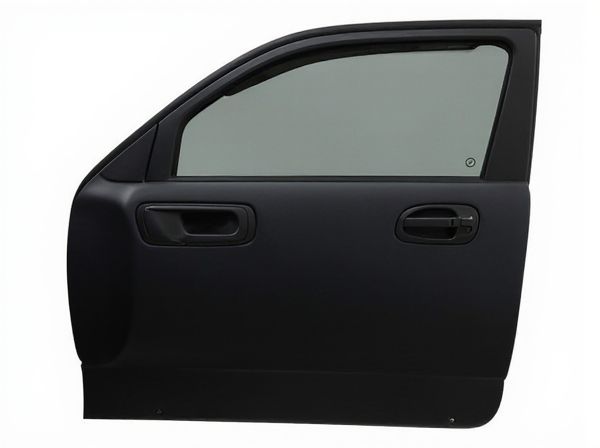
Photo illustration: Pinch-Guard Window vs Standard Power Window
Pinch-Guard windows enhance safety by detecting obstructions and automatically reversing to prevent injury or damage, unlike standard power windows that lack this protective feature. Your vehicle benefits from improved protection for passengers, especially children, with the advanced sensor technology of Pinch-Guard windows. Choosing Pinch-Guard windows reduces the risk of accidents while maintaining the convenience of automatic window controls.
Table of Comparison
| Feature | Pinch-Guard Window | Standard Power Window |
|---|---|---|
| Safety | Auto-reverse on obstruction, reduces injury risk | No obstruction detection, higher injury risk |
| Technology | Sensor-based pinch protection system | Basic motor controls without sensors |
| Cost | Higher initial cost | Lower cost, more affordable |
| Durability | Enhanced with safety mechanism | Standard durability |
| User Convenience | Peace of mind with safety feature | Standard operation without safety alerts |
Introduction to Power Windows
Power windows have revolutionized vehicle convenience by allowing electric control of window movement, replacing manual cranks. Pinch-guard windows enhance safety by incorporating sensors that detect obstructions and prevent injury or damage during closure. Standard power windows offer basic up-and-down operation but lack this advanced protective feature.
What is a Pinch-Guard Window?
A Pinch-Guard Window is a power window equipped with advanced sensors that detect obstructions when closing, automatically reversing or stopping to prevent injury or damage. Unlike standard power windows, which lack this safety feature and can cause pinch injuries, Pinch-Guard Windows significantly enhance passenger safety by responding instantly to resistance. This innovative technology is commonly integrated into modern vehicles to comply with safety regulations and improve user protection.
How Standard Power Windows Work
Standard power windows operate using an electric motor connected to a regulator system that moves the window glass up and down within the door frame. When the switch is pressed, an electrical circuit activates the motor, which engages the regulator to lift or lower the glass smoothly. These systems lack advanced safety features like the pinch guard, which detects obstructions and prevents window closure to avoid injuries.
Key Safety Features of Pinch-Guard Windows
Pinch-Guard windows incorporate advanced sensors that detect obstructions, immediately stopping or reversing window movement to prevent injury. Unlike standard power windows, which lack anti-pinch technology, Pinch-Guard windows significantly reduce the risk of finger or hand entrapment incidents. This key safety feature enhances passenger protection, making Pinch-Guard windows a crucial upgrade for modern vehicle and building applications.
Comparing Accident Risks: Pinch-Guard vs. Standard
Pinch-Guard windows significantly reduce accident risks by automatically stopping and reversing when an obstruction is detected, preventing injuries such as finger pinching or trapping. Standard power windows lack this safety feature, increasing the likelihood of accidents, especially among children and pets. Studies show that vehicles equipped with Pinch-Guard windows report fewer window-related injuries and enhanced passenger safety compared to standard models.
Installation and Maintenance Differences
Pinch-Guard windows feature advanced safety sensors that require precise wiring and calibration during installation, unlike standard power windows which have simpler assembly processes. Maintenance for Pinch-Guard systems involves regular sensor testing and software updates to ensure optimal performance, whereas standard power windows typically need only basic mechanical checks and occasional motor lubrication. The increased complexity of Pinch-Guard windows demands specialized technical expertise, impacting both installation time and upkeep costs compared to standard power windows.
Legal Requirements and Industry Standards
Pinch-guard windows incorporate advanced sensors to detect obstructions, meeting stringent legal requirements such as the U.S. Consumer Product Safety Commission (CPSC) standards that mandate anti-pinch features in power windows. Standard power windows often lack these safety mechanisms, potentially failing to comply with evolving automotive regulations and industry standards like the UNECE Regulation No. 21 on door locks and retention components. Compliance with these regulations is critical for manufacturers to ensure passenger safety and avoid liability issues associated with window-related injuries.
Cost Comparison: Pinch-Guard vs. Standard Windows
Pinch-Guard windows typically cost 15-30% more than standard power windows due to advanced safety features that prevent finger injuries by detecting obstructions. Installation fees for Pinch-Guard systems may also be higher, reflecting the added technology and complexity. Over time, the higher upfront investment in Pinch-Guard windows can result in reduced liability and repair expenses related to pinch incidents, potentially offsetting the initial cost difference.
User Experience and Convenience
Pinch-Guard windows enhance user experience by preventing injury through automatic reversal when detecting obstructions, ensuring safety during operation. Standard power windows lack this feature, making them prone to accidental pinching, which can cause discomfort or harm. The convenience of Pinch-Guard windows lies in their seamless protection without additional user intervention, providing peace of mind and effortless control.
Choosing the Right Power Window for Your Vehicle
Pinch-Guard windows enhance vehicle safety by preventing injury through automatic reversal when an obstruction is detected, making them ideal for families or high-traffic vehicles. Standard power windows offer basic up-and-down functionality without obstruction detection, often at a lower cost but with increased risk of pinching hazards. When choosing the right power window for your vehicle, prioritize safety features like pinch-guard technology for enhanced protection and regulatory compliance, especially in family-oriented or commercial vehicles.
 caratoz.com
caratoz.com